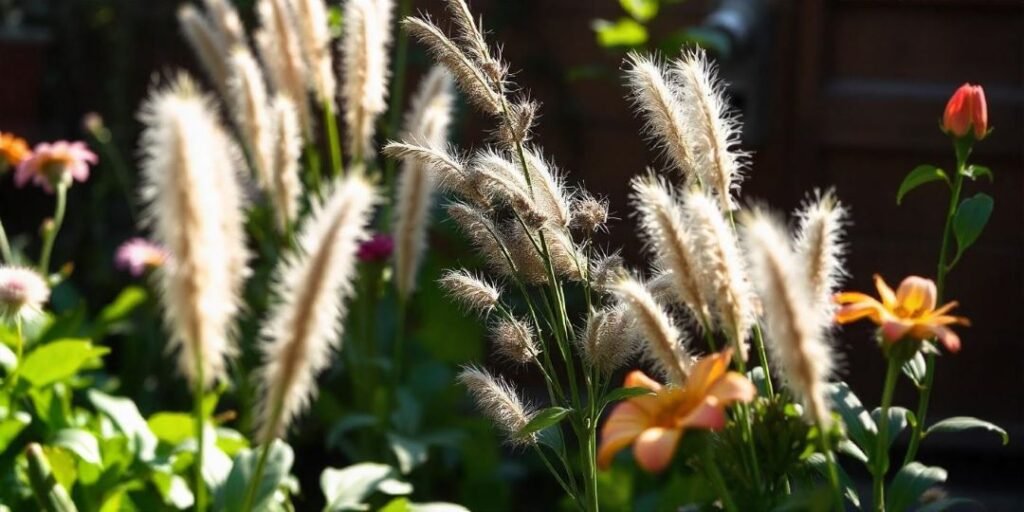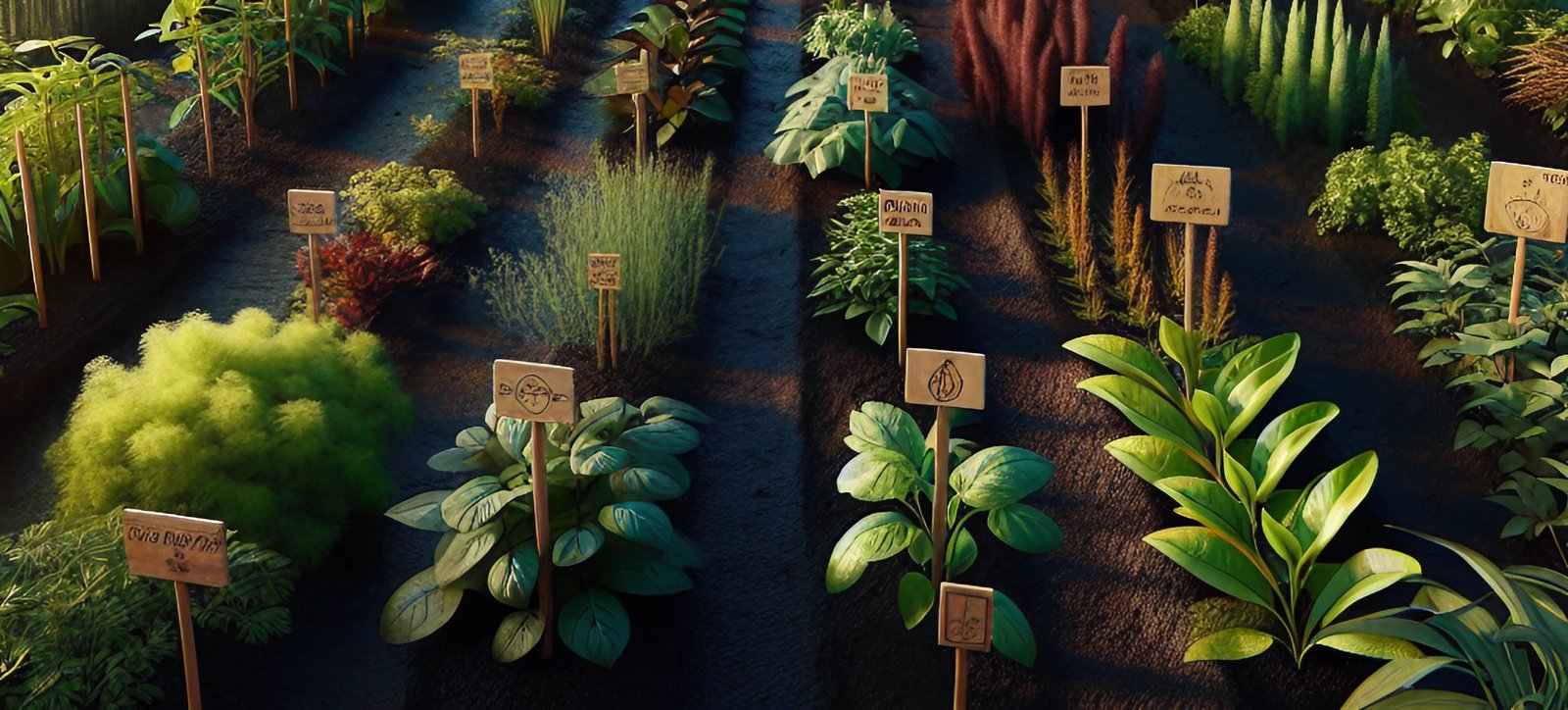Urban gardening is more than a pastime it is an enriching way to connect with nature cultivate fresh food and improve biodiversity all within a limited space. Creating a productive year-round garden may seem daunting for urban gardeners with a medium-sized plot. However with intentional seasonal planning you can have a vibrant productive garden that adapts beautifully to each seasons unique demands.
This guide breaks down how to plan and adapt your urban garden for each Seasonal Garden Planning Guide for a Medium Sized Urban Plot carefully considering your medium-sized plots unique limitations and strengths. You can maximize productivity manage resources efficiently and enjoy a garden that thrives in all weather through seasonal planning.
The Importance of Seasonal Planning for Urban Gardens
Each season brings specific climate conditions changes in daylight hours and different plant growth cycles. This is especially important in urban gardening as space constraints require a strategic approach. Seasonal planning is critical to making the most of every square foot ensuring that your garden provides food beauty and a welcoming habitat for pollinators throughout the year.
| Benefit | Description |
|---|---|
| Extended Harvest | A year-round planting plan enables continuous harvesting and maximized productivity. |
| Visual Appeal | Diverse seasonal plants ensure your garden is always in bloom or growing showcasing a new array of colors and textures each season. |
| Efficient Resource Use | By adapting your approach to each seasons unique needs you conserve water nutrients and time. |
| Pest Control | Seasonal crop rotation and strategic plant selection minimize pest problems organically. |
| Cost-Efficiency | Seasonal crops reduce the need for frequent replanting and lower maintenance costs by sustaining soil and plant health year-round. |
Assessing Your Garden Plot Before Each Season
Understanding your gardens unique conditions is fundamental to effective seasonal planning. Urban plots often have challenges such as limited sunlight soil quality and smaller space. Let us break down the primary considerations for urban gardeners in a medium-sized plot.
Soil Health and Structure
Urban soils often face issues such as compaction low fertility and occasionally contamination. Conduct a soil test to determine pH balance and nutrient levels. This step is crucial as different plants require specific soil conditions to thrive. To improve soil consider adding organic compost aged manure or pH-adjusting amendments based on your test results. Fall is an ideal time to focus on soil improvement.
Light and Shade Mapping
Mapping out the sunlight in your garden helps you determine the ideal placement for different plants. Track sunlight throughout the day to find full sun (6+ hours) partial shade (3–6 hours) or full shade (less than 3 hours) areas. Seasonal shifts will affect how sunlight moves so recording these variations helps make long-term decisions on where to plant each season.
Space-Saving Techniques
With a medium-sized urban plot maximizing every inch of space is essential. Incorporate vertical gardening with structures like trellises hanging baskets or stacked planters. Vertical supports work well for vining plants such as cucumbers beans or certain flowers which climb upward instead of occupying precious ground space. Raised beds and compact containers also work well for various plants in smaller plots.
Spring Garden Planning: Awaken Your Urban Garden
Spring is when your garden begins to come alive. After winter is dormancy spring offers mild temperatures and increased sunlight that encourages growth in many types of plants. This season focuses on preparing soil sowing cool-weather crops and setting up infrastructure to handle the active growing months ahead.
Essential Spring Tasks for a Thriving Garden
- Prepare and Amend Soil
- Start by loosening the soil and incorporating compost which provides nutrients to jumpstart the growing season. In urban areas compost or organic fertilizers can compensate for nutrient deficiencies often found in compacted soils.
- Early Planting and Sowing Cool-Season Crops
- Spring is ideal for planting cool-season crops like lettuce spinach carrots and peas. These crops thrive in mild temperatures and cooler nights. Consider starting with hardy plants that can withstand unpredictable spring weather.
- Pruning and Cleaning Up the Plot
- Clear away any dead plant material from the previous year prune shrubs and check perennials for signs of new growth. Pruning in spring helps plants develop strong structures and prevents disease.
- Weed Control and Mulching
- Spread a layer of mulch around your new plants. This will help keep the soil moist and protect the plants. Mulching early in the season makes it easier to keep up with weeds as the year progresses.
Suggested Spring Plants
Here are some plants well-suited for springtime in a medium-sized urban plot:
| Category | Examples |
|---|---|
| Vegetables | Lettuce Radishes Peas |
| Flowers | Daffodils Pansies Tulips |
| Herbs | Chives Mint Parsley |
SSummer Garden Planning: Managing Heat and Maximizing Growth

Summer is the peak season for growth in many gardens. Still urban plots may need more space and excessive heat from surrounding buildings. To keep your garden healthy focus on consistent watering pest control and optimizing growth patterns.
Essential Summer Tasks
- Watering and Mulch Maintenance
- With increased temperatures water demand rises. Water your plants deeply and early in the morning to prevent evaporation. Add extra mulch to conserve moisture and keep roots cool.
- Regular Harvesting
- Frequent harvesting encourages continuous production especially in fruit-bearing plants like tomatoes peppers and zucchinis. Harvesting also reduces the risk of pest infestations and maintains plant health.
- Pest Control and Organic Solutions
- Summer is a high-risk season for pests. Consider organic methods like neem oil insecticidal soap or companion planting with pest-repelling plants like marigolds. Regular checks will help you notice any issues before they become serious.
- Pruning and Deadheading
- Prune dead or overgrown branches and remove spent flowers to encourage further blooming. Deadheading also reduces seed production keeping energy directed toward new growth.
Top Summer Plants for Urban Gardens
Choose plants that can withstand intense sun and high temperatures:
| Vegetables | Flowers | Herbs |
|---|---|---|
| Tomatoes | Marigolds | Basil |
| Zucchini | Sunflowers | Dill |
| Eggplants | Zinnias | Oregano |
Fall Garden Planning: Winding Down and Prepping for Winter
Fall brings a transition to cooler temperatures making it ideal for planting certain hardy vegetables and winterizing your garden. This season is also perfect for preparing the soil and protecting plants from the impending winter.
Essential Fall Tasks for Your Urban Garden
- Harvest Late-Summer Crops and Clear Debris
- Finish harvesting any remaining summer vegetables. Clear away dead or dying plants and add them to your compost pile.
- Planting Cool-Season Vegetables
- Start cool-season crops like kale carrots and radishes. Some flowers like chrysanthemums also thrive in the cooler months adding color to your fall garden.
- Mulching and Cover Crops
- Apply a thicker layer of mulch around your plants to insulate roots against frost. Consider sowing cover crops such as clover which prevents erosion suppresses weeds and adds organic material to the soil.
- Pruning and Dividing Perennials
- Prune back perennial herbs and flowers to avoid disease and encourage strong spring growth. Some perennials may also benefit from being divided allowing you to spread them around the garden or share them with neighbors.
Ideal Fall Crops and Plants
Maximize your gardens output by selecting plants that thrive in more excellent conditions:
| Vegetables | Flowers | Herbs |
|---|---|---|
| Broccoli | Chrysanthemums | Thyme |
| Brussels Sprouts | Asters | Sage |
| Carrots | Black-Eyed Susans | Rosemary |
Winter Garden Planning: Preparing for Cold and Indoor Gardening
In winter outdoor gardening options may be limited especially in urban areas with minimal space and sunlight. Focus on protecting perennials setting up indoor gardens and planning for spring.
Winter Tasks for a Healthy Garden
- Protect Perennials and Shrubs
- Cover perennials with mulch or frost blankets to insulate them from freezing temperatures. Move any potted plants indoors or to a sheltered area.
- Set Up Indoor Growing
- Winter is an excellent time to grow herbs and vegetables indoors using grow lights. Indoor plants like basil parsley and lettuce thrive in indoor conditions and provide fresh produce year-round.
- Plan and Order for Spring
- This perfect time to reflect on the past year plan for spring planting and order any seeds or tools needed. Preparing now will help you hit the ground running when warmer temperatures return.
Optimizing Space and Layout Year-Round
Creating designated zones for each seasons needs can optimize your space:
| Garden Zone | Best Use | Examples |
|---|---|---|
| Raised Beds | Seasonal vegetables | Kale (winter) tomatoes (summer) |
| Vertical Gardens | Herbs and small plants | Basil mint |
| Pathways | Accessibility | Gravel stepping stones |
For additional gardening insights explore our guide to building a low-cost greenhouse and learn how to create a budget-friendly indoor growing environment.
Effective Gardening Techniques for Urban Plots
While seasonal planning is essential employing effective gardening techniques will help you maximize productivity and efficiency in your urban garden. Here are some tried-and-true methods that can lead to success:
Companion Planting
Companion planting involves growing certain plants together to enhance growth deter pests or improve flavor. This strategy is beneficial in a medium-sized urban plot where maximizing space and resources is critical.
Popular Companion Pairings
| Plant | Companion | Benefits |
|---|---|---|
| Tomatoes | Basil | Enhances flavor and deters pests. |
| Carrots | Onions | Improve growth and reduce carrot fly. |
| Peas | Radishes | Radishes deter pests that affect peas. |
| Marigolds | Nearly all vegetables | Deter nematodes and attract |
Crop Rotation

Crop rotation is a farming method where farmers regularly change the types of crops they grow in the same field. This practice helps keep the soil in good condition and reduces the chances of pests and diseases. By switching up what they plant farmers can make better use of the nutrients in the soil which leads to healthier plants and better harvests.
Rotation Cycle Example
| Year | Plant Family | Examples |
|---|---|---|
| Year 1 | Legumes | Peas Beans |
| Year 2 | Brassicas | Broccoli Cabbage |
| Year 3 | Solanaceae | Tomatoes Peppers |
| Year 4 | Alliums | Garlic Onions |
Integrated Pest Management (IPM)
In urban gardening managing pests organically is essential. Integrated Pest Management combines various strategies to control pests while minimizing environmental harm.
IPM Techniques
- Monitoring: Regularly inspect plants for pests and signs of disease.
- Cultural Controls: Properly rotate crops and space plants and maintain healthy soil to reduce pest problems.
- Biological Controls: Consider bringing in helpful insects like ladybugs and lacewings. These little creatures eat harmful bugs that can damage plants making them great allies for a healthy garden.
- Physical Barriers: Use row covers nets or sticky traps to prevent pests from reaching plants.
Implementing these strategies will cultivate a healthier garden with fewer pests and diseases.
Water Management
Effective water management is crucial for successful urban gardening particularly during the hot summer. Consider these methods:
- Create a simple watering system that delivers water gradually to plants. This helps keep them hydrated without overwatering.
- Rain Barrels: Collect rainwater to use for irrigation. This method conserves resources and reduces water bills.
- Watering Schedule: Water your plants in the morning or in the evening for the best results. This helps the water soak in better and reduces the amount that evaporates in the heat of the day ensuring your plants get the moisture they need.
Implementing efficient watering techniques will keep your garden thriving while conserving resources.
Creating a Year-Round Planting Calendar
Having a planting calendar is essential for effective seasonal garden planning. It lets you know when to sow seeds transplant seedlings and harvest crops. Below is a sample year-round planting calendar tailored for a medium-sized urban plot:
Spring Planting Calendar
| Month | Action | Plants |
|---|---|---|
| March | Sow indoors | Tomatoes Peppers |
| April | Transplant seedlings outdoors | Lettuce Kale |
| May | Direct sow | Carrots Radishes Beans |
Summer Planting Calendar
| Month | Action | Plants |
|---|---|---|
| June | Sow directly for fall crops | Spinach Beets |
| July | Harvest summer crops | Tomatoes Cucumbers |
| August | Prepare for fall planting | Brassicas Garlic |
Fall Planting Calendar
| Month | Action | Plants |
|---|---|---|
| September | Sow cool-season crops | Lettuce Broccoli |
| October | Mulch and protect perennials | Prepare soil for winter |
| November | Final harvest and cleanup | Carrots Winter squash |
Winter Planting Calendar
| Month | Action | Plants |
|---|---|---|
| December | Plan for spring | Order seeds design layout |
| January | Start indoor herb garden | Basil Chives Mint |
| February | Check garden supplies | Soil amendments tools |
Indoor Gardening: A Supplement to Your Urban Plot
While seasonal gardening primarily focuses on outdoor spaces indoor gardening can complement your efforts and provide fresh produce year-round. Here are some tips for practical indoor gardening:
Choosing the Right Plants
Select plants that thrive indoors with lower light levels. Some great options include:
| Plant | Light Requirement | Notes |
|---|---|---|
| Herbs (Basil and Mint) | Moderate | Regularly harvest for best growth. |
| Leafy Greens | Moderate to Low | Grow in containers with good drainage. |
| Succulents | Low | Require minimal watering. |
Utilizing Grow Lights
For areas with limited natural light invest in grow lights. LED grow lights are energy-efficient and can mimic sunlight promoting healthy growth for indoor plants.
Soil and Fertilization
Choose a good potting soil that helps water drain well and provides the nutrients plants need to grow. Make sure to fertilize your indoor plants regularly based on what they need for healthy growth.
Gardening Resources and Communities

Connecting with fellow gardeners and utilizing available resources can enhance your gardening experience. Here are some valuable resources to consider:
Online Gardening Communities
- Reddit (r/gardening): A vibrant community where you can share experiences and ask questions.
- Facebook Groups: Search for local gardening groups to connect with nearby gardeners.
Gardening Websites and Blogs
- The Old Farmers Almanac: A wealth of information on planting calendars weather forecasts and gardening tips.
- Gardeners Supply Company: Offers a variety of tools and products for urban gardeners as well as articles on best practices.
Local Extension Services
Contact your local agricultural extension office for workshops soil testing services and expert advice on urban gardening practices specific to your area.
Conclusion: Cultivating a Thriving Urban Garden Year-Round
Planning and managing a medium-sized urban plot requires foresight flexibility and a commitment to sustainability. By embracing seasonal garden planning implementing effective gardening techniques and utilizing available resources you can create a flourishing garden that beautifies your space and provides nourishment and enjoyment.
Gardening is an exciting journey where you can learn and grow along the way. Each season comes with its own set of challenges and rewards. By staying involved and curious you can create a garden that showcases your love for nature and caring for the environment.th learning and adaptation. Every season presents unique difficulties and benefits. Staying knowledgeable and involved allows you to nurture a garden that showcases your dedication to nature and sustainable practices.
FAQs about Seasonal Garden Planning Guide for a Medium Sized Urban Plot
What is seasonal garden planning?
Seasonal garden planning involves strategically planning what to plant when and how to care for it throughout the different seasons of the year. This approach helps maximize space ensure continuous harvests and adapt to changing weather conditions.
How do I start planning my urban garden for different seasons?
To start planning your urban garden consider the following steps:
Assess Your Space: Evaluate your garden plots size sunlight exposure and soil conditions.
Research Seasonal Plants: Identify which plants thrive in your region during each season.
Create a Planting Calendar: Develop a calendar outlining when to sow seeds transplant seedlings and harvest crops throughout the year.
Consider Companion Planting: Pair plants that benefit each other to optimize space and pest management.
What vegetables can I grow in a medium-sized urban plot?
In a medium-sized urban plot you can grow a variety of vegetables including:
Spring: Lettuce peas and radishes.
Summer: Tomatoes cucumbers and peppers.
Fall: Kale broccoli and root vegetables like carrots and beets.
Winter: Spinach and other cold-hardy greens.
How can I make the most of limited space in an urban garden?
To maximize limited space in an urban garden:
Use Vertical Gardening Techniques: Grow plants vertically using trellises hanging pots or wall planters.
Implement Raised Beds: Beds can increase soil quality and efficiently use available space.
Opt for Container Gardening: Grow plants in pots or containers allowing flexibility and mobility within your garden.
